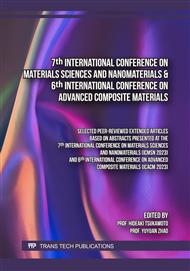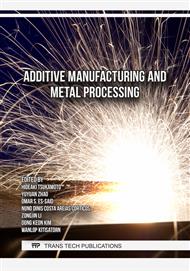p.39
p.49
p.59
p.65
p.73
p.79
p.87
p.93
p.101
A Study of Annealing Effects on the Joints of a Rotary Friction Welds of AISI 1030 Steel
Abstract:
This study is concerned with the post-heat treatment of rotational friction welds. AISI 1030 carbon steel parts are welded by rotational friction welding (RFW). The welding process parameters include friction pressure (P1), friction time (T1); Forging pressure (P2), forging time (T2). During the friction phase, the rotational speed is 1450 rpm; after that, the welding parts is stopped immediately and pressed together. The weld samples will be annealed at 650 °C for 4 hours. The change in the properties of the material of a RFW weld joint such as hardness, tensile strength, bending strength as well as grain size when undergone a heat treatment process was investigated. The obtained results show that the annealing process strongly changes the mechanical properties through altering the microstructure of the weld. Particularly, the weld hardness and tensile strength decrease significantly while the bending strength and elongation increase as a result of the increase in grain size and uniformity of the phase distribution. The annealed weld has a hardness reduction of nearly 20% and a tensile strength reduction of about 24% compared to the original weld. The elongation in the tensile test increases from 1.1% for weld specimens to 2.54% for post-heat-treated welds. In the bending test, the maximum load before the appearance of cracks on the specimen increased by about 42% when comparing the post-heat and original weld specimens.
Info:
Periodical:
Pages:
73-78
Citation:
Online since:
December 2023
Authors:
Price:
Сopyright:
© 2023 Trans Tech Publications Ltd. All Rights Reserved
Share:
Citation:



